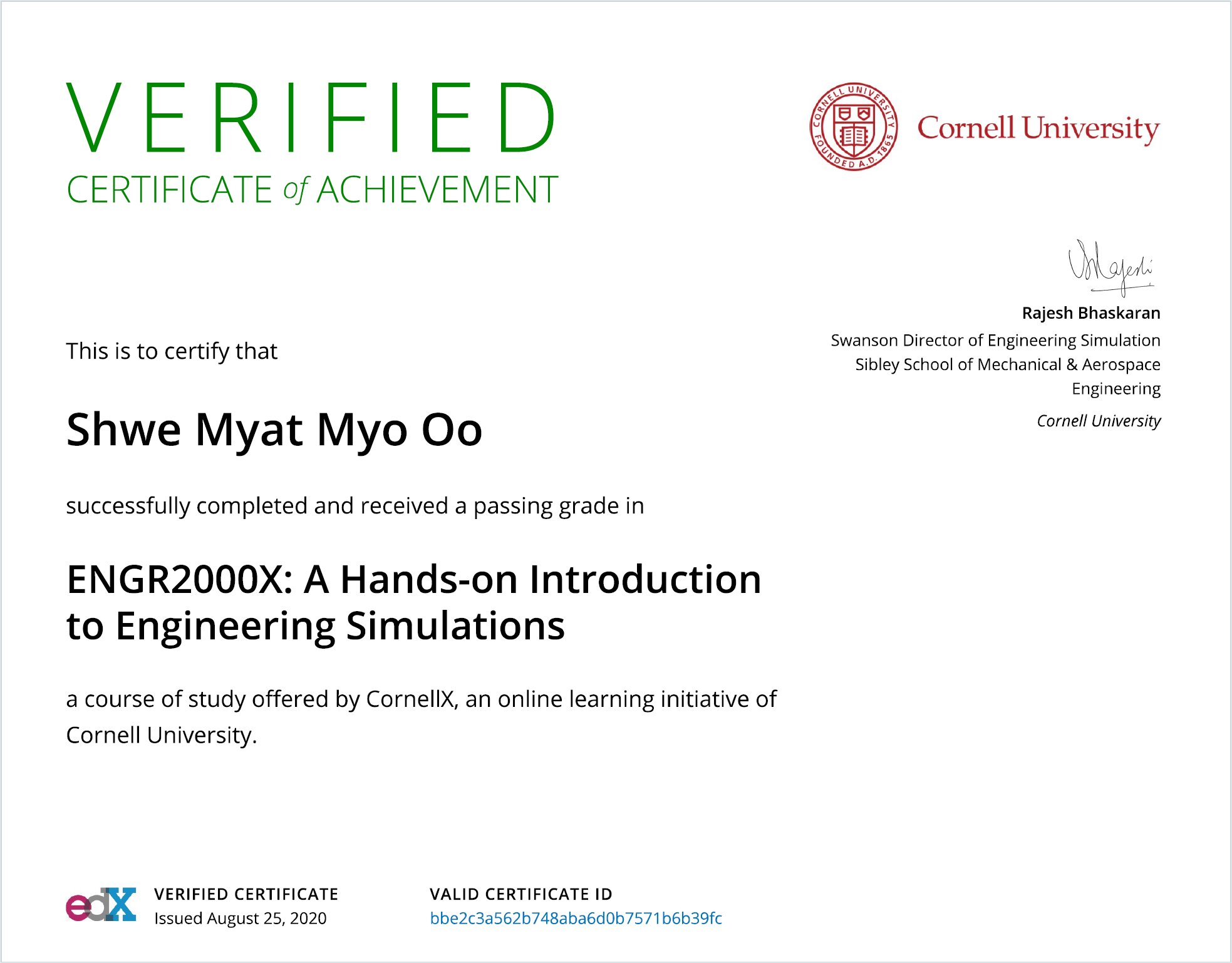Welcome back! I’ve noticed that a key challenge for people interested in engineering simulation is not knowing where to get started. After taking ENGR2000X (A Hands-On Introduction to Engineering Simulation), I am convinced that this course is a great foundation/kickoff point for a holistic introduction to FEA and CFD as well as a great review of essential theory (and software skills, if your preferred platform for simulation is ANSYS). Although there are many good beginner books and other material available out there to get started with–and thus many possible learning paths–ENGR2000X provides a gentle yet useful guided tour that provides a strong basic intuition of the simulation process from pre-analysis to post-calculation verification and validation.
The course starts with a ‘birds-eye view’ of how physical principles get translated into mathematical models that are solvable by a computer, which then outputs results that can be post-processed in various ways (e.g. charts, graphs, and of course the ever-seductive color pictures). This process is then demonstrated with increasingly complex simulations in FEA, and then switches over to CFD after Module 3 to show the application of the same basic simulation principles in a different physical context. For FEA, the software used was ANSYS mechanical, which was a little new for me because my first experiences for that were with Siemens NX and then Abaqus–but the ANSYS interface was still familiar enough for me to quickly get used to it. The CFD modules used ANSYS Fluent (as opposed to CFX etc), which is more my forte because I’ve been using it at work. Theory-wise, ENGR2000X is an excellent course for a refresher in FEA, but to be honest (especially for CFD) the content felt like it was undergrad senior level/new graduate student starting out in simulation. The derivations are not rigorous since the point is for building intuition and nailing down the main concepts, but I appreciated the course because my structural analysis theory was a little rusty. As for software proficiency in ANSYS, this course is a lifesaver it goes through every software procedure (meshing etc) step by step and explains the reasoning behind why each step is taken/why ANSYS made it that way–a trait that I do not see much in any other simulation course thus far.
After the first four modules (which are graded and thus compulsory for getting a certificate) the course steps up in level and gets into more complex simulations that much more closely resemble real-life engineering situations that warrant simulation than much of the earlier examples. Module 5 introduces turbulence nicely by guiding you through analysis of a NACA 0012 airfoil, and Module 6 combines everything taught thus far and takes it to the next level by introducing fluid-structure interactions (FSI) with a wind turbine analysis. Even though these modules are not necessary for a certificate, I highly recommend completing these modules as well if you are getting started with simulation and are serious about continuing to learn more.
ENGR2000X is linked to SimCafe, an evolving resource that covers many forms of engineering simulation from biomechanical phenomena to magnetostatics (which I have zero experience in). I encourage you to take a look and see what’s good; even if you’re not new to simulation, seeing the same general principles applied in different contexts can provide novel insights that may benefit your own work.

Above is my grade distribution for the course. To my slight shame (“dishonor on your family, dishonor on your cow…”), I got one or two questions in the CFD module (Module 4) wrong because I did not clearly understand what the question was asking for in one instance (phrasing in question language) and made a numerical mistake or two, but they were relatively minor and for the most part I understood what was going on pretty well. Different parts of the course are weighed differently–each part has a different number of questions. Course certificate is shown below for completeness.



Comment